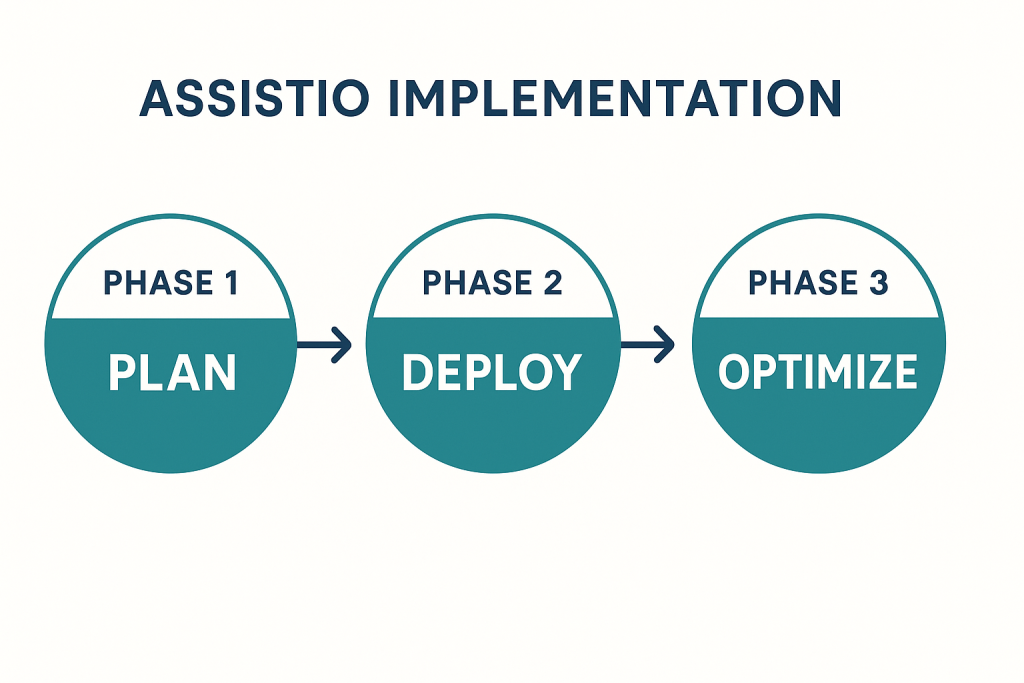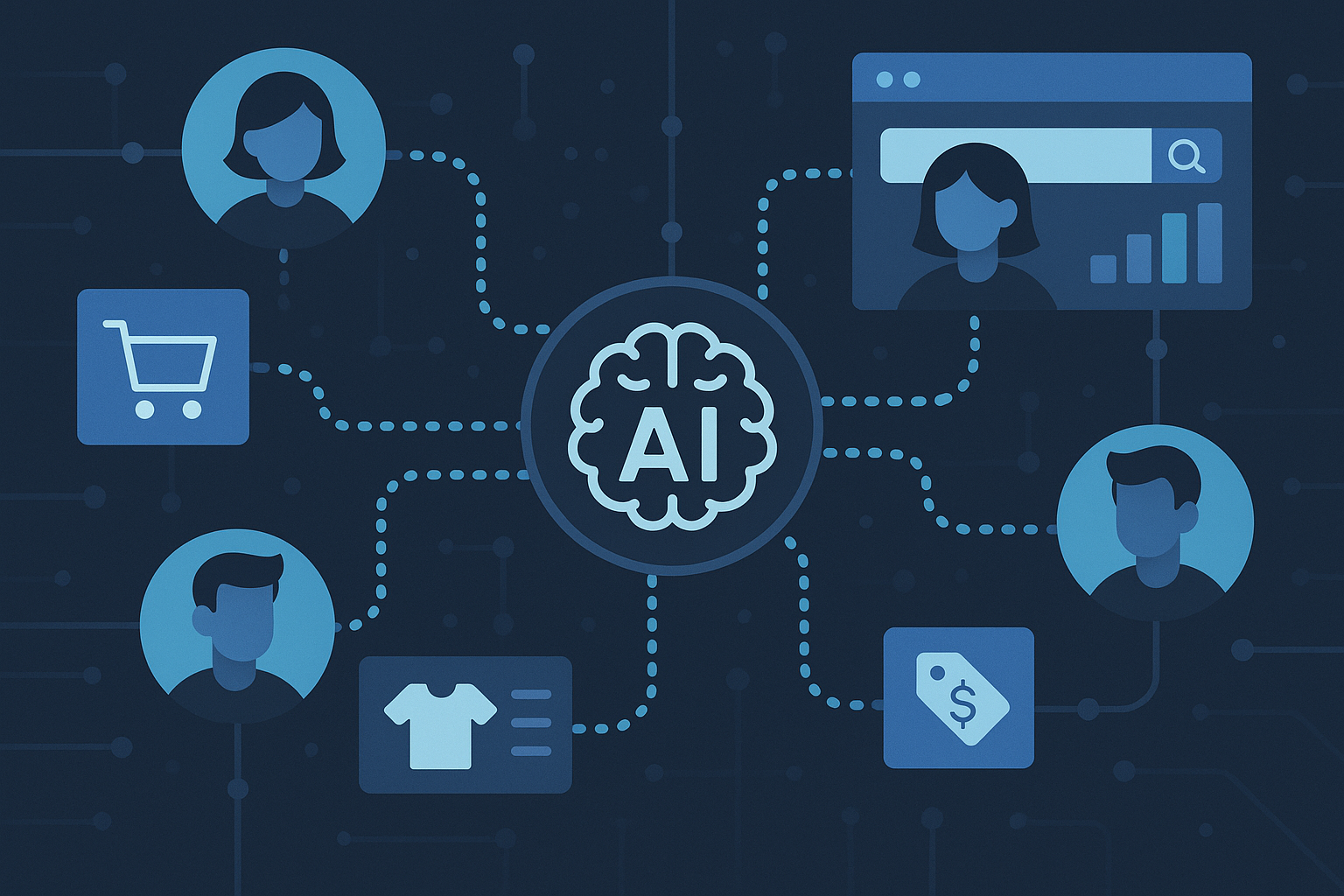Multi-agent ecommerce systems are revolutionizing how online stores operate, combining artificial intelligence with autonomous workflows to create unprecedented levels of automation and efficiency. These sophisticated systems deploy multiple AI agents that work collaboratively to handle everything from inventory management to customer support, fundamentally transforming traditional e-commerce operations. ASSISTIO represents the pinnacle of this technology, offering store owners a comprehensive multi-agent platform that automates critical business processes while enhancing customer experience and driving growth.

What Are Multi-Agent Ecommerce Systems?
Multi-agent ecommerce systems consist of multiple autonomous AI agents that collaborate to manage different aspects of online store operations. Unlike traditional automation tools that follow rigid, pre-programmed sequences, these intelligent agents can make context-aware decisions, adapt to changing circumstances, and communicate with each other to optimize overall performance.
MAS is used in e-commerce, wherein multiple agents track the preferences, and behavior of users, and provide customized recommendations and messages. These agents specialize in different areas namely data analysis, tailoring contents, and user profiling. This specialization allows each agent to become highly proficient in its domain while contributing to the system’s collective intelligence.
The core components of multi-agent ecommerce systems include:
Autonomous Decision-Making: Each agent can analyze data, evaluate options, and make decisions without human intervention, enabling real-time responses to market changes and customer needs.
Inter-Agent Communication: Agents share information and coordinate actions through sophisticated communication protocols, ensuring seamless workflow integration across all store operations.
Adaptive Learning: The system continuously learns from interactions, outcomes, and feedback, improving performance and accuracy over time.
Scalable Architecture: Multi-agent systems can easily accommodate growing business needs by adding specialized agents or expanding existing capabilities.
According to Forester, AI startups received $12.2 billion in funding across over 1,100 deals only during Q1 2024, reflecting continued investor confidence in AI’s transformative potential. This massive investment underscores the critical role these systems will play in the future of e-commerce.

The Four Pillars of ASSISTIO’s Multi-Agent Success
ASSISTIO’s revolutionary approach to e-commerce automation rests on four specialized AI agents, each designed to excel in specific operational areas while working harmoniously within the broader system.
Store Management Assistant: Strategic Intelligence
The Store Management Assistant serves as the strategic brain of your e-commerce operation, providing data-driven insights and optimization recommendations. This agent continuously analyzes your store’s performance metrics, identifying bottlenecks, opportunities, and trends that might escape human observation.
Key capabilities include:
- Performance analytics and reporting across all store functions
- Personalized recommendations based on real-time store data analysis
- Strategic guidance for inventory optimization and pricing strategies
- Actionable insights for business growth and market expansion
- Integration with other agents to provide holistic operational intelligence
Product Agent: Content and Catalog Optimization
The Product Agent revolutionizes how online stores manage their product catalogs, transforming tedious manual processes into automated, intelligent workflows. This agent handles everything from product registration to SEO optimization, ensuring your catalog remains competitive and discoverable.
Core functionalities encompass:
- Automated product registration with bulk import capabilities
- SEO-optimized product descriptions that rank higher in search results
- Dynamic content updates based on customer feedback and market analysis
- Competitive pricing analysis and adjustment recommendations
- Category management and product relationship optimization
AI shopping agents Personalized product recommendations from AI agents will boost loyalty and conversions. The Product Agent leverages this capability to create compelling product presentations that drive sales.
Customer Support Agent: 24/7 Intelligent Assistance
The Customer Support Agent transforms customer service from a cost center into a revenue-generating asset. Operating around the clock, this agent provides instant, intelligent responses to customer inquiries while continuously learning from interactions to improve service quality.
Advanced features include:
- Instant responses to product inquiries, order tracking, and navigation assistance
- Automatic issue resolution for common problems like returns and exchanges
- Sentiment analysis to escalate complex issues to human agents when necessary
- Support workload reduction of up to 80% through intelligent automation
- Multilingual capabilities for global customer base support
According to Gartner, 80% of customer service and support organizations will apply Generative AI in some form — such as AI-supported chatbots — by 2025 to improve the customer experience (CX).
Blog Post Agent: Content Marketing Automation
The Blog Post Agent addresses one of e-commerce’s most time-consuming challenges: creating consistent, high-quality content that drives organic traffic and customer engagement. This agent produces SEO-optimized blog content that aligns with your brand voice and marketing objectives.
Content creation capabilities:
- SEO-optimized blog posts targeting relevant keywords and topics
- Performance-based content updates using analytics insights
- Audience-tailored content generation based on customer demographics
- Integration of customer support insights to address common questions
- Content calendar management and publishing automation
Real-World Impact: Before vs. After ASSISTIO Implementation
The transformation ASSISTIO brings to e-commerce operations becomes evident when examining real-world performance metrics and operational changes.
Before ASSISTIO: Traditional E-commerce Challenges
Traditional e-commerce operations face numerous inefficiencies:
- Manual product catalog management consuming 15-20 hours weekly
- Customer support response times averaging 4-6 hours
- Inventory management requiring constant human oversight
- Content creation bottlenecks limiting marketing efforts
- Reactive rather than proactive business decision-making
After ASSISTIO: Intelligent Automation Results
69% of retailers using AI agents report significant revenue growth due to improved personalization and predictive analytics, and ASSISTIO users typically experience:
Operational Efficiency Gains:
- 80% reduction in customer support workload through intelligent automation
- 75% decrease in product catalog management time
- 60% improvement in inventory turnover rates
- 90% faster response times to market changes and customer inquiries
Revenue and Growth Impact:
- Average 25-35% increase in conversion rates through personalized experiences
- 40% improvement in customer satisfaction scores
- 50% reduction in cart abandonment rates
- 20-30% growth in average order value through intelligent recommendations
Competitive Advantages:
- 24/7 operation capability without additional staffing costs
- Real-time adaptation to market trends and customer preferences
- Scalable growth without proportional increases in operational complexity
- Data-driven decision making replacing intuition-based strategies

Getting Started with Smart Store Management
Implementing ASSISTIO’s multi-agent system requires strategic planning and phased deployment to maximize benefits while minimizing disruption to existing operations.
Phase 1: Assessment and Planning
Begin by conducting a comprehensive audit of your current e-commerce operations. Identify pain points, inefficiencies, and areas where automation could provide the greatest impact. Common starting points include customer support automation and product catalog optimization, as these typically deliver immediate, measurable results.
Phase 2: Agent Deployment and Integration
Start with deploying one or two agents to prove value before expanding to the full multi-agent system. The Customer Support Agent often provides the quickest wins, immediately reducing response times and support workload. Follow with the Product Agent to streamline catalog management and improve SEO performance.
Phase 3: Optimization and Scaling
As agents begin operating and collecting data, focus on optimization and fine-tuning. Monitor performance metrics, adjust agent parameters, and gradually expand automation to additional operational areas. The learning capabilities of ASSISTIO’s agents mean performance continues improving over time.
Integration Considerations
ASSISTIO integrates seamlessly with popular e-commerce platforms including WooCommerce, Magento, Shopify, and BigCommerce. The system’s API-first architecture ensures compatibility with existing tools and workflows, minimizing technical disruption during implementation.
Future of AI-Powered E-commerce with Multi-Agent Systems
The trajectory of multi-agent ecommerce systems points toward even more sophisticated automation and intelligence capabilities.
While eCommerce companies will begin testing AI agents in 2025, the technology won’t revolutionize the industry for several more years, indicating we’re still in the early stages of this transformation. However, early adopters like ASSISTIO users are already experiencing significant competitive advantages.
Emerging Trends and Capabilities
Predictive Commerce: Future multi-agent systems will anticipate customer needs before they’re expressed, automatically preparing inventory and personalized offers based on predictive analytics.
Voice and Conversational Commerce: By 2025, half of online searches will be voice-activated, pushing businesses to adopt conversational AI. Multi-agent systems will naturally integrate voice capabilities for seamless customer interactions.
Autonomous Supply Chain Management: Agents will manage entire supply chains autonomously, from vendor negotiations to logistics optimization, creating unprecedented efficiency gains.
Hyper-Personalization at Scale: AI and real-time data will deliver shopping experiences tailored to individual preferences. Multi-agent systems will enable this personalization across every customer touchpoint.
Strategic Implications for E-commerce
The businesses that thrive in the coming decade will be those that successfully integrate multi-agent systems into their operations. Industry leaders among online merchants and software platforms are already embracing AI as a core part of their strategies, and this is only the beginning.
ASSISTIO represents not just a technological upgrade, but a fundamental shift toward intelligent, autonomous e-commerce operations. As these systems continue evolving, they’ll become essential infrastructure for competitive online retail, much like payment processing and inventory management systems are today.
The question isn’t whether to adopt multi-agent ecommerce systems, but how quickly businesses can implement them to maintain competitive advantage in an increasingly automated marketplace. ASSISTIO provides the roadmap and technology to make this transition successful, profitable, and sustainable for the long term.
Ready to transform your e-commerce operations with ASSISTIO’s multi-agent system? Contact our team today to schedule a personalized demonstration and discover how our AI agents can revolutionize your online store’s performance, efficiency, and growth potential.


Leave a Reply